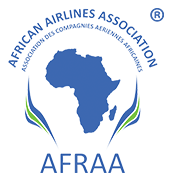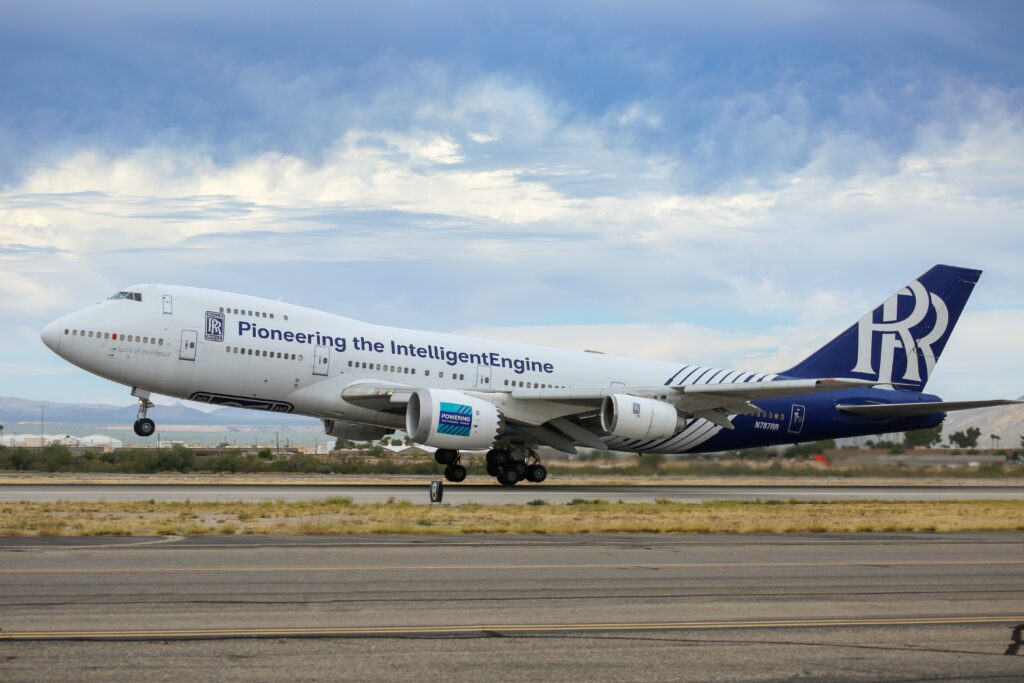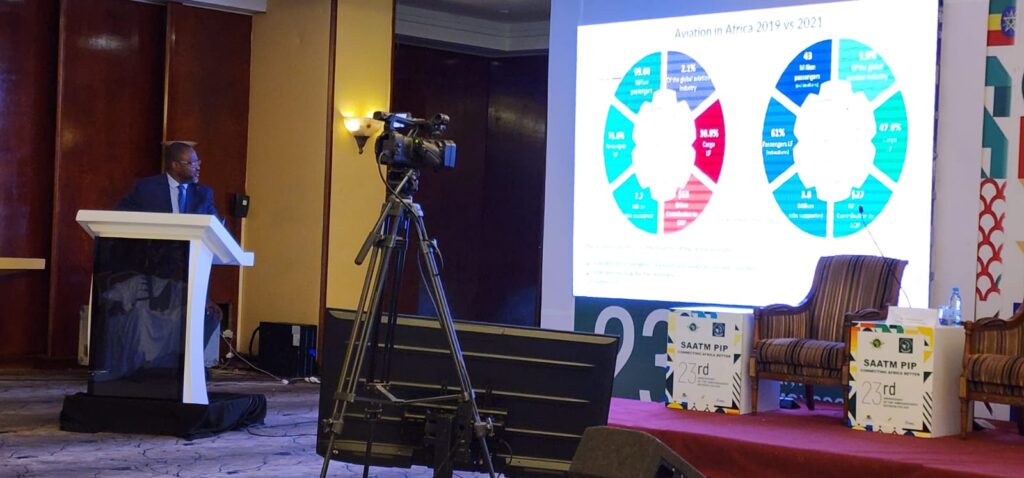Introduction
Air connectivity brings together people and businesses and serves as essential link between regional communities and the wider world. In Africa, air connectivity has been the main transport mode linking some landlocked and island communities to the world. The importance of these connections became evident during the two critical years of the Covid-19 crisis when travel stalled and trade suffered.
The aviation industry is on a recovery path from Covid-19 and projections are that growth over the next 20 years will be phenomenal. As an industry that has always taken its environmental responsibilities seriously, long-term aspirational goals (LTAG) have been in the works and are now being concretized. The LTAG comes on the back of much earlier short to medium term environmental change mitigation measures that the industry initiated years back. The industry has developed and is implementing a range of standards, policies and guidance material aircraft noise and emissions, technological improvements, operating procedures, proper organization of air traffic, appropriate airport and land-use planning, and the use of market-based measures.
IATA and ICAO Resolutions Aligned with the Paris Agreement
In a resolution passed at the 77th IATA AGM in Boston, USA, on 04 October 2021, the global airline industry committed to achieving net-zero carbon emissions from their operations by 2050. This bold pledge brings air transport in line with the objectives of the Paris agreement to limit global warming to 1.5°C. The global civil aviation operations will achieve net-zero carbon emissions by 2050, supported by accelerated efficiency measures, energy transition and innovation across the aviation sector and in partnership with Governments around the world.
During the 41st ICAO general assembly in Sep/Oct 2022 a resolution on the long-term aspirational goal (LTAG) of net-zero emissions by 2050 was overwhelmingly adopted by member states. The agreement admitted that special circumstances and capabilities of each country which could influence the outcomes. These factors will determine the ability of a country to achieve the target within its national timeframe. A call for financial and technical support to developing countries for accelerated use of sustainable aviation fuels (SAF) was also endorsed to the pleasure of the developing countries.
ICAO hopes that the net-zero targets will rely on the adoption of new aircraft technologies, streamlined flight operations and the use of SAF. The net-zero resolution also calls for the establishment of a climate finance initiative and voluntary technology transfer for developing SAF.
The alignment of the IATA and ICAO resolutions to the objectives of the Paris Agreement to limit global warming to 1.5°C is probably what the world has been waiting for to make the necessary changes that will make aviation more responsible and sustainable. The road ahead will be challenging, but if we act and support each other as one aviation ecosystem, we can make this a reality.
What Does Net Zero Emission Really Mean?
Put simply, it means removing an equal amount of CO2 from the atmosphere as we release into it. The term net zero applies to a situation where global greenhouse gas emissions from human activity are in balance with emissions reductions. Net zero does not mean the absence of CO2, rather though CO2 emissions will continue, an equivalent amount of what is generated is removed from the atmosphere, thus resulting in zero increase in net emissions. Achieving net zero by 2050 will require measures aimed at elimination of emissions at the source, offsetting and carbon capture technologies.
AFRAA is convinced that, the aviation industry commitment to net zero CO2 emissions by 2050 would require supportive government policies backing the coordinated efforts of the entire industry (airlines, airports, air navigation service providers, manufacturers).
Contribution of African Aviation Industry to CO2 Reduction
The aviation industry focus has always been to progressively reduce emissions while accommodating the growing demand of a population that is eager to fly. The ICAO Carbon Offsetting and Reduction Scheme for International Aviation (CORSIA) is a key enabler of this goal. CORSIA will stabilize international emission levels in the short-to-medium term. The current focus among African airlines is to reduce as much CO2 as possible through investment in new and modern aircraft, operating more efficiently and investing in smarter airport infrastructure and facilities.
African airlines commitment to sustainable environmental practices are noticeable through operational decisions and policy changes as recommended by IATA and ICAO in the following areas:
- Striving for the most efficient operations – flying more direct routes, aircraft continuous ascent and decent
- Investing in new and modern aircraft
- Taking measures to reduce carbon footprint
- Introducing recycling initiatives at their facilities
- integrating environmental concerns with all planning and decision making processes
- Adapting energy and water efficient practices
- Encouraging improvement in the performance of suppliers through the development of environmental criteria within the framework of procurement policies
Some 17 African countries have signed up for the voluntary phase of the CORSIA emissions monitoring and reporting. In cooperation with IATA, Ethiopian Airlines, Kenya Airways and South African Airways among others launched Carbon Offset Program that offers customers the opportunity to contribute towards offsetting the CO2 emissions related to their flights. The money raised through these schemes are invested in re-forestation projects in the respective countries. In Ethiopia and Kenya, Boeing is working the airlines and governments to help the countries develop SAF feedstock production capacity. Boeing is also working with Ethiopian Airlines to include aviation sustainability in the curriculum of the Ethiopian aviation Academy.
In 2016, South African Airways (SAA) was the first African passenger airline to operate a flight using sustainable aviation fuel (SAF). Similar SAF operated flights were subsequently conducted in Ethiopia and Kenya. However, the enthusiasm fizzled out due to lack of incentives and other challenges.
AFRAA, AFCAC, IATA and ICAO have variously organized workshops and seminars aimed at sensitizing airlines on the environmental impact of their operations and mitigation measures for sustainability and net zero emissions. These have brought significant awareness on measure to be adopted to improve the situation and build capacity at the operational level.
Industry Prescription for Achieving Net Zero Emissions
The transition needed to achieve global net zero emissions must be supported by a holistic government policy framework focused on realizing cost-effective solutions and backed by the coordinated efforts of the entire industry. The table below by IATA sets out the estimated milestones towards net zero, including the mix of abatement measures and some noteworthy actions envisaged, A commitment of resources, expertise and adherence to the proposed timelines could be the surest way for the industry attaining the ambitious goal on net zero emission by 2050.
Milestones towards net zero
|
DATE |
AMOUNT OF CO2 ABATEMENT |
PATHWAY |
ACTION
|
| 2025 |
381 megatonnes (Mt)
(2021-2025) |
97% offsets, 2% SAF, 1% improvements above business as usual (BAU) |
ICAO agree long-term
goal for international
aviation (2022);
energy sector commits to
at least 6 million
tonnes SAF production;
agreement of full
implementation of
Article of Paris Agreement |
| 2030 |
979 Mt
(2026-2030) |
93% offsets; 5% SAF, 2% Improvements above BAU |
Use of 100% SAF on
aircraft, ANSPs fully
implement ICAO
Aviation System Block
upgrades to deliver
fuel efficiency
improvements of
0.3% by 2030 |
| 2035 |
1,703 Mt
(2031–2035) |
77.5% offsets, 17.5% SAF, 3% improvements above BAU, 2% Carbon Capture Utilization and Storage (CCUS) |
Evolutionary technology
achieving 30% reduction in
fuel burn, electric/
hydrogen aircraft
for regional
markets (50-100 seats,
30-90 min flights)
become available |
| 2040 |
3,824 Mt
(2036-2040) |
44.5% offsets, 40% SAF, 7.5% non drop-in fuel
(new propulsion technologies), 5% CCUS, 3% improvements above BAU |
Feasibility of new
aircraft such as
blendedwing
bodies demonstrated with
full-scale working
prototypes,
electric/hydrogen
for short-haul markets
(100-150 seats,
45-120min flights)
become available. |
| 2045 |
6,153 Mt
(2041-2045) |
55% SAF, 24% offsets, 10% non drop-in fuel, 8%
CCUS, 3% improvements above BAU |
Necessary infrastructure
for new energy
requirements
(low carbon electricity/
hydrogen)
becomes available |
| 2050 |
8,164 Mt
(2046-2050) |
65% SAF, 13% non dropin fuel, 11% CCUS, 8%
offsets, 3% improvements above BAU |
Commercially viable
annual SAF
production of 449
billion litres available |
Source: IATA


